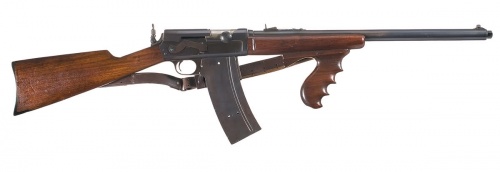 . Information on a M1 Carbine Modification during WWII - FIREARMS - U.S. Militaria Forum. Scoped.
. Information on a M1 Carbine Modification during WWII - FIREARMS - U.S. Militaria Forum. Scoped.  .
.  . Bayonet
. Bayonet  30 round br4.
30 round br4. 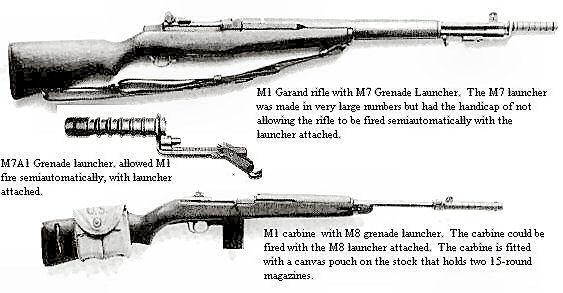 M8 GL BR3 90th IDPG: The M8 Grenade Launcher.
M8 GL BR3 90th IDPG: The M8 Grenade Launcher.  chopped
chopped 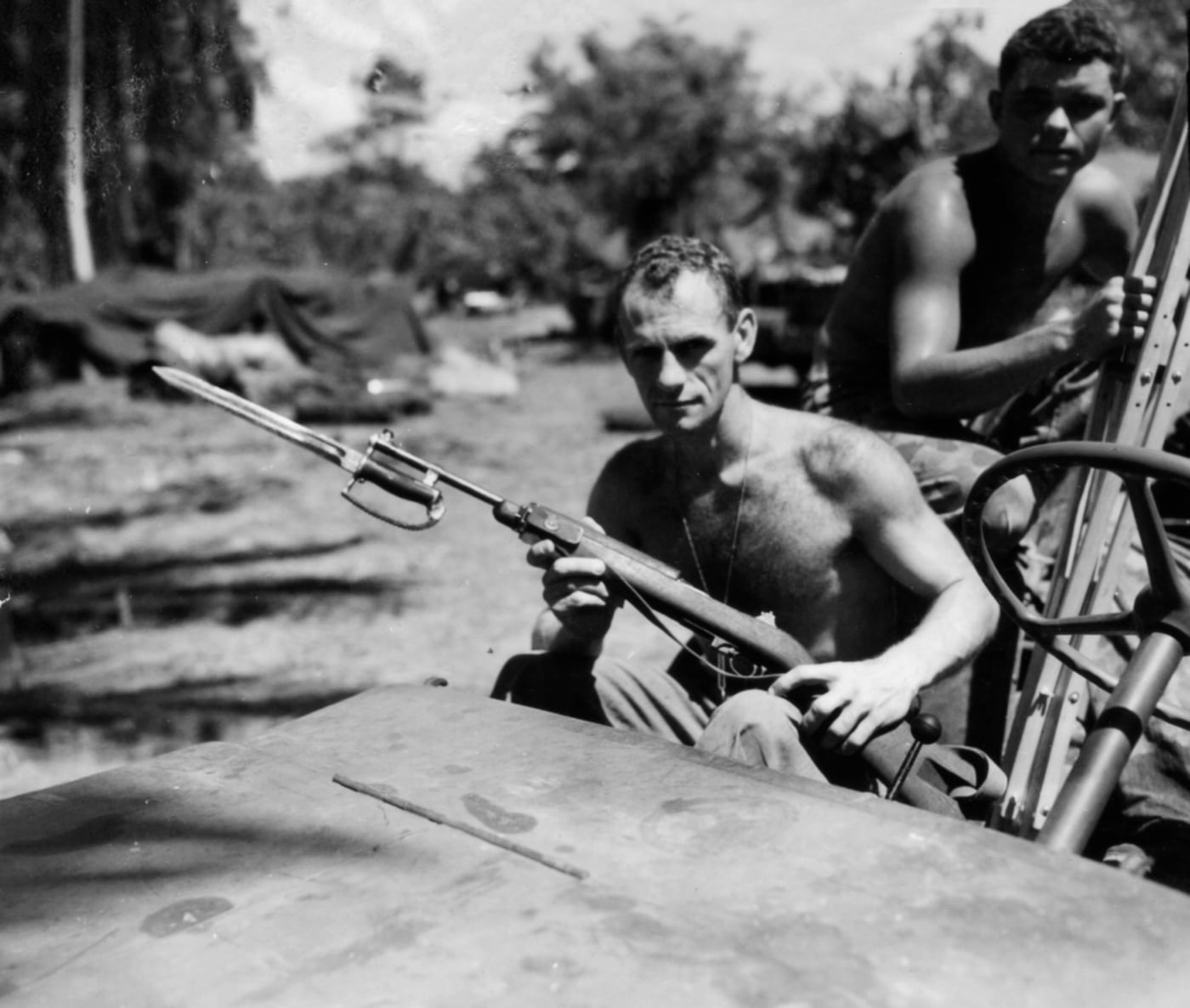 .
. 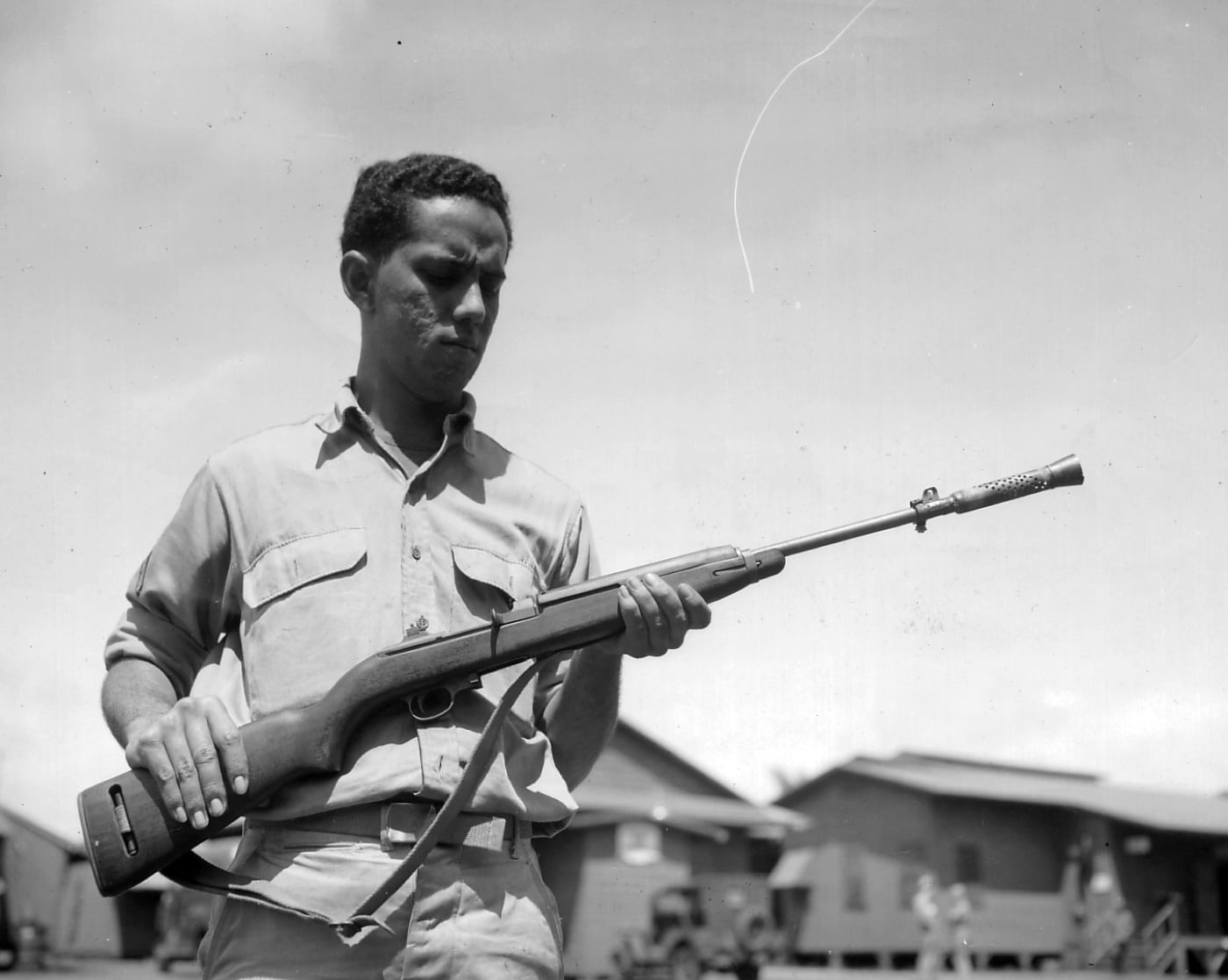 . Flash hider
. Flash hider 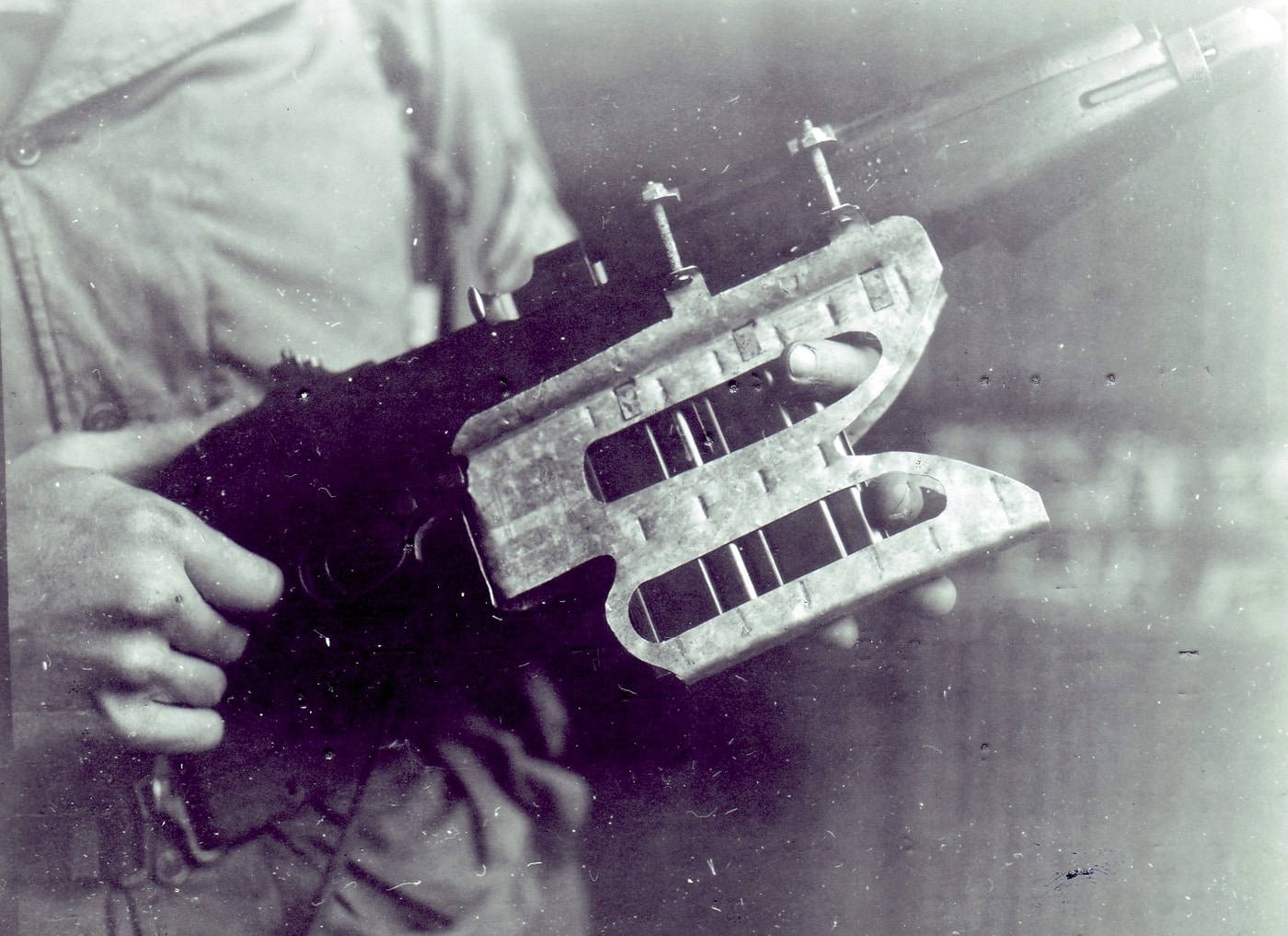 clip carrier
clip carrier
Originally the M1 carbine did not have a bayonet lug, but personnel equipped with it were often issued with an M3 fighting knife. Due to requests from the field, the carbine was modified to incorporate a bayonet lug attached to the barrel band starting in 1945.[35] However, very few carbines with bayonet lugs reached the front lines before the end of World War II. After the war, the bayonet lug was added to many M1 carbines during the arsenal refurbishing process. By the start of the Korean War, the bayonet lug-equipped M1 was standard issue. It is now rare to find an original M1 carbine without the bayonet lug. The M1 carbine mounts the M4 bayonet, which was based on the earlier M3 fighting knife and formed the basis for the later M5, M6 and M7 bayonet-knives.
A folding-stock version of the carbine, the M1A1, was also developed after a request for a compact and light infantry arm for airborne troops. The Inland Division of General Motors manufactured 140,000 of them in two product runs in late 1942.[30] They were originally issued to the 82nd and 101st airborne divisions but were later issued to all U.S. Army Airborne units and the U.S. Marine Corps.[30] The folding-stock M1A1 is an unusual design in that the stock is not locked in the open or closed position, but is instead held in place by a spring-loaded cam.
As carbines were reconditioned, parts such as the magazine catch, rear sight, barrel band without bayonet lug, and stock were upgraded with current standard-issue parts. Also, both during and after World War II, many semi-automatic M1 carbines were converted to select-fire M2 carbines by using the T17 and T18 conversion kits.[36] The conversion included a modified sear, slide, and trigger housing, and added a disconnector, disconnector lever, and selector switch that could be set for semi-auto or full-automatic fire.
During World War II, the T23 (M3) flash hider was designed to reduce the muzzle flash from the carbine, but was not introduced into service until the advent of the M3 carbine.[37] With the exception of T23 hiders mounted on M3 carbines, few if any T23 flash-hider attachments saw service during the war, though unit armorers occasionally hand-built improvised compensator-flash-hiders of their own design.[37][26]
Combat tests of the M2 carbine resulted in an Army Ground Forces request that led to development of the T13 recoil check adopted September 1945.[38]
The M1 carbine was used with the M8 grenade launcher (see M7 grenade launcher), which was developed in early 1944. It was fired with the .30 caliber Carbine M6 grenade blank cartridge to launch 22 mm rifle grenades. However, the stress from firing rifle grenades could eventually crack the carbine’s stock, and it also could not use the launcher with the M7 auxiliary “booster” charge to extend its range without breaking the stock. This made the M1 carbine with M8 grenade launcher a type of emergency-use weapon. 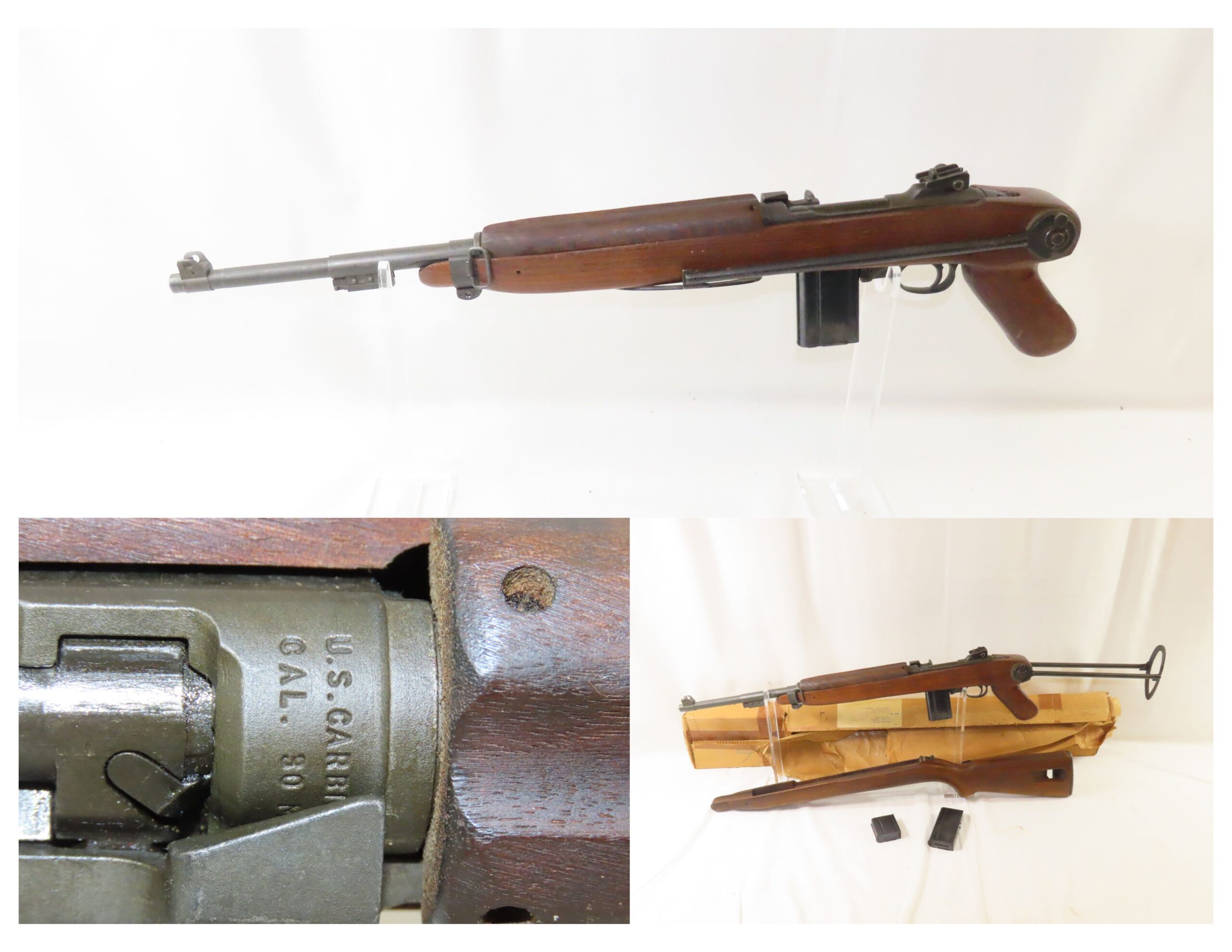

 md8 5rd.
md8 5rd.  .
. 